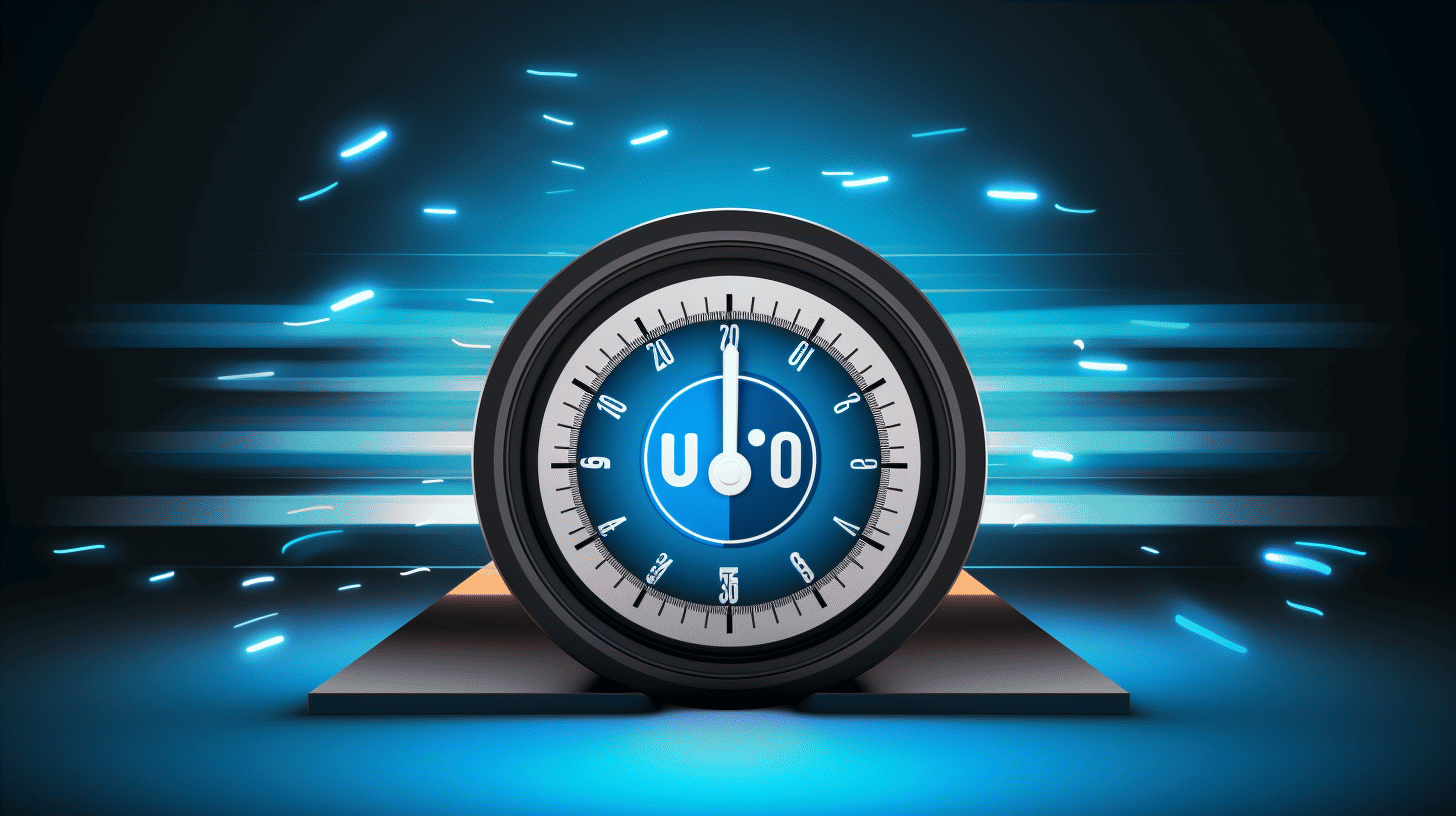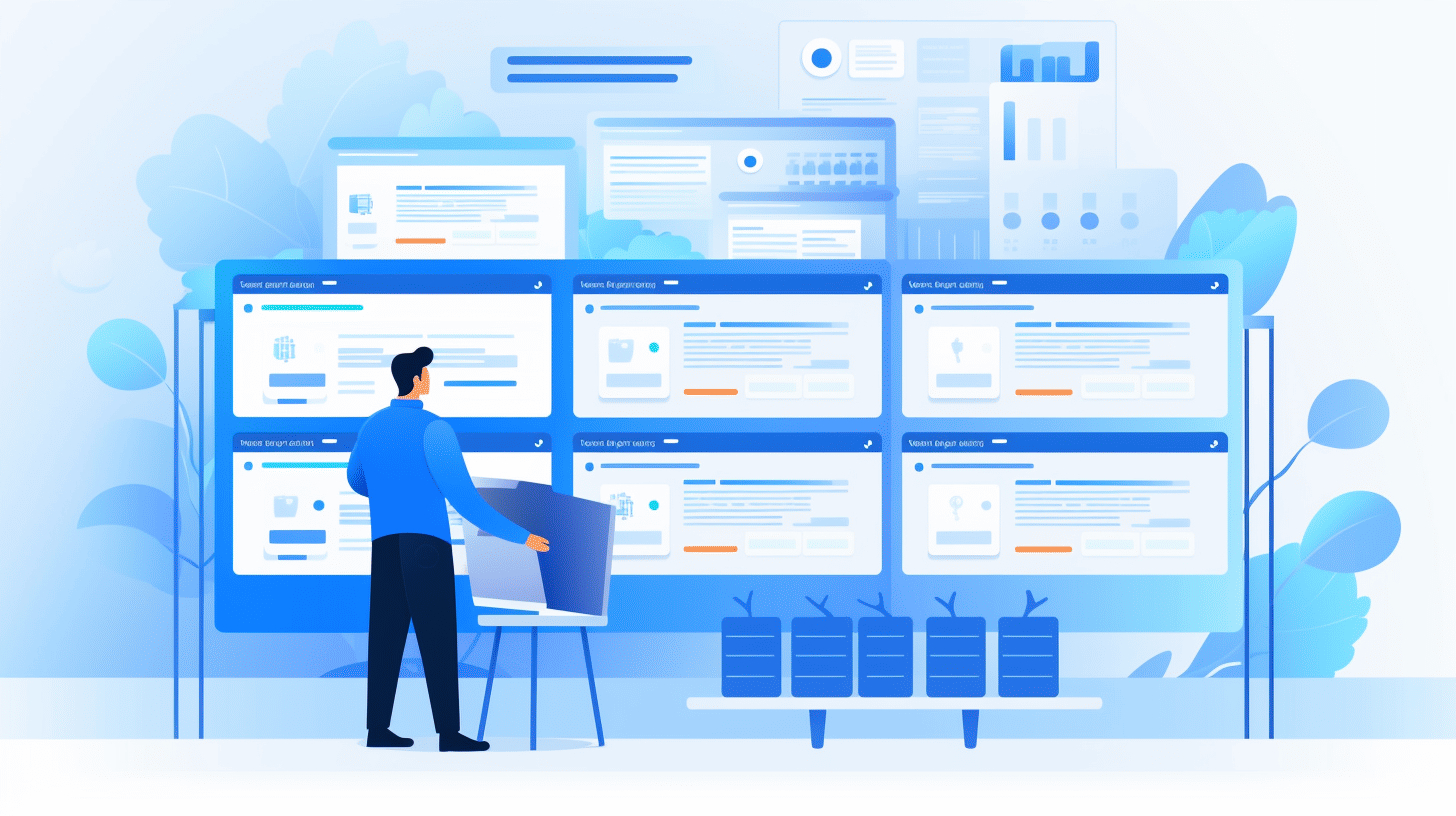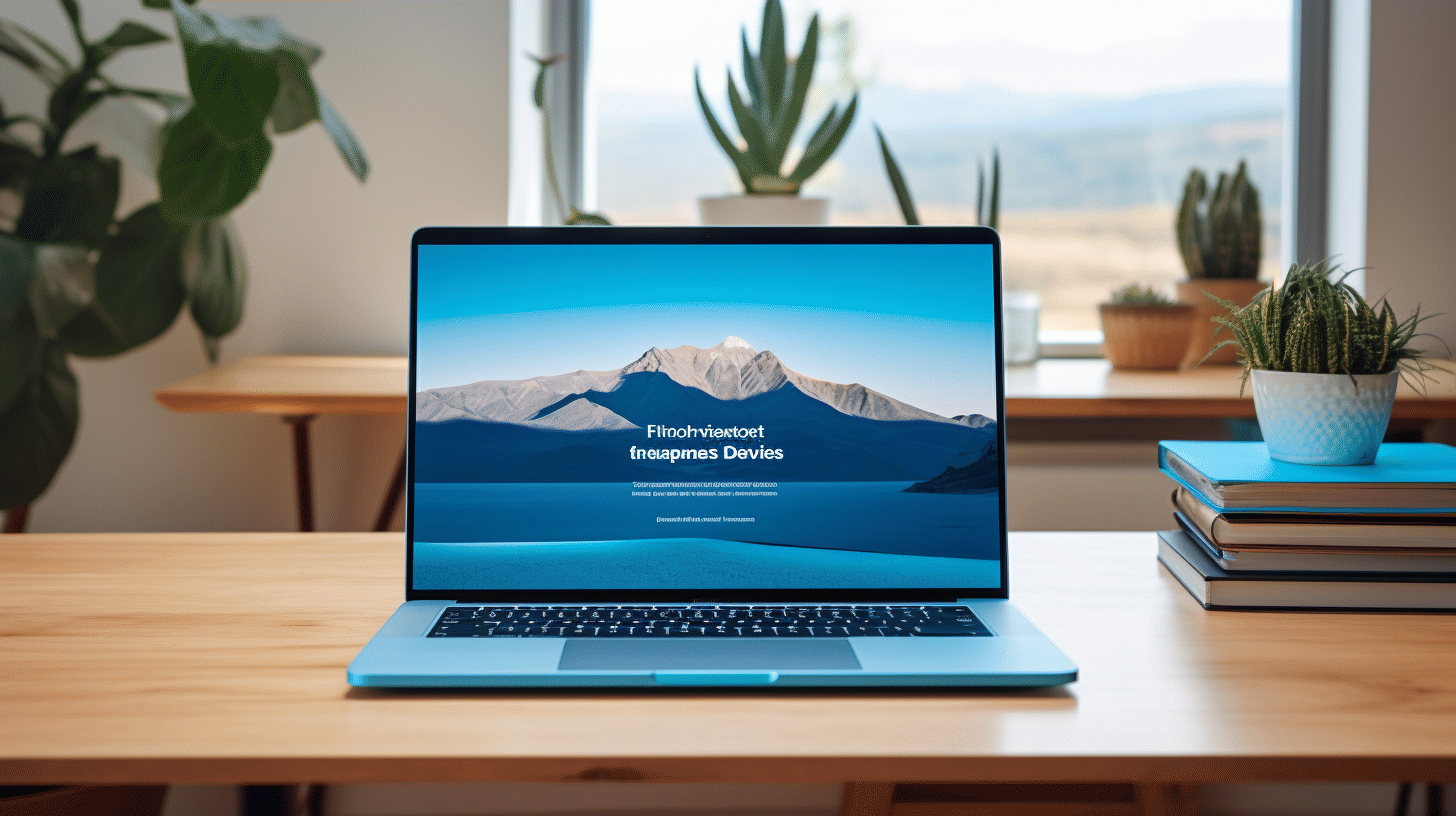在当今快节奏的数字世界中,网站加载速度可以决定在线业务的成败。访问者希望网站能够快速加载,如果加载速度慢,他们会毫不犹豫地点击可怕的后退按钮,然后转到竞争对手的网站。这意味着加载时间缓慢可能会导致失去机会、转化率下降,并最终对您的收入产生负面影响。
幸运的是,有很多方法可以增强您的 WordPress 网站并优化其加载速度。从图像优化到缓存插件和托管服务提供商选择,采取适当的步骤可以显著提高您网站的性能,为您的访问者提供更好的用户体验。
在本文中,我们将深入探讨网站速度优化的世界,并探索各种技术和工具,帮助您实现 WordPress 网站的闪电般快速加载时间。我们将涵盖从图像优化和插件优化到文件压缩和内容交付网络的所有内容。所以,系好安全带,准备好将您的网站提升到一个新的水平吧!
以下是我们将要介绍的内容:
- 优化图像以提高速度
- 选择基于绩效的主题
- 缓存插件利用
- 插件优化
- 托管服务提供商选择
- 文件最小化
- 内容分发网络 (CDN) 实施
- WordPress 数据库优化
那么,您准备好升级您的 WordPress 网站并让您的竞争对手望尘莫及了吗?让我们开始吧!
优化图像以提高速度
想象一下,您偶然发现了一个漂亮的网站,它有令人惊叹的视觉效果和引人入胜的内容。您不禁为之惊叹。然而,当您急切地等待页面加载时,却感到沮丧。网站加载时间太长,让您犹豫是继续浏览还是继续浏览。
网站加载速度至关重要;它可以成就或毁掉您的在线形象。如今的用户对于加载缓慢的网站几乎没有耐心,研究表明,仅仅几秒钟的延迟就会导致跳出率上升,并降低整体用户满意度。影响加载速度的关键因素之一是网站上图片的优化。
优化图像可以显著提高网站加载速度1图像通常占网站文件大小的很大一部分,如果优化不当,可能会导致页面加载缓慢。但不要害怕!通过几个简单的步骤和最佳实践,您可以确保您的图像针对速度进行了优化,从而提供流畅而愉快的用户体验。
图像优化的最佳实践:
为了提高网站速度,以下是一些经过尝试和测试的图像优化最佳实践:
- 调整图片大小:在将图片上传到您的网站之前,请确保已适当调整图片大小。使用图片编辑工具或插件缩小图片尺寸,以匹配您网站上所需的显示尺寸。图片越大,加载时间越长,因此调整图片大小可以显著减小文件大小并提高加载速度。
- 压缩图片:图片压缩是一种有助于减小图片文件大小而不影响其质量的技术。通过压缩图片,您可以在视觉吸引力和加载速度之间取得平衡。有各种工具和插件可用于压缩图片而不会损失太多质量。
- 选择正确的文件格式:不同的文件格式具有不同的特性,适用于不同类型的图像。使用适当的文件格式可以进一步优化您的图像。请考虑以下事项:
- JPEG/JPG:适合具有多种色彩的照片和复杂图像。
- PNG:最适合具有透明度或简单调色板的图像。
- SVG:非常适合需要可扩展性的徽标或图形。
- 使用延迟加载:延迟加载是一种仅在图像在用户视口中可见时才加载的技术。这有助于优先加载重要内容,并推迟加载最初位于可见区域之外的图像。实施延迟加载可以显著缩短初始页面加载时间。
- 利用浏览器缓存:为图片设置适当的缓存标头以启用浏览器缓存。这允许浏览器在初始加载后将图片存储在本地,从而减少用户重新访问页面时再次获取图片的需要。浏览器缓存可以大大缩短回访者的页面加载时间。
请记住,优化图片速度是一个持续的过程。定期审核您的网站,以识别任何超大或未压缩的图片,并采取必要的措施对其进行优化。通过实施这些最佳做法,您可以确保您的网站快速加载,为您的用户提供无缝且愉快的浏览体验。
🌟 专业提示: 想要了解有关提高 WordPress 网站速度的更多信息?请查看 本文 获得有价值的见解和可操作的提示来提升您网站的性能!
选择基于绩效的主题
在当今快节奏的数字世界中,网站性能对于吸引和留住用户的注意力至关重要。加载缓慢的网站会导致高跳出率和低转化率。因此,选择优先考虑速度和优化的基于性能的主题非常重要。为您的网站选择主题时,请考虑以下因素:
高品质、速度导向的主题
选择基于性能的主题时要考虑的关键方面之一是整体质量和速度优化。高质量的主题不仅可以增强网站的美观度,还可以确保您的页面快速流畅地加载。加载缓慢的网站会让用户感到沮丧,并会阻止他们停留并与您的内容互动。
以下是一些高质量、注重速度的主题的特点:
- 干净的代码: 寻找具有结构良好且经过优化的代码的主题。干净的代码有助于减少网站文件的整体大小,从而缩短加载时间。
- 响应式设计: 确保您选择的主题具有响应性,并能无缝适应不同的屏幕尺寸。适合移动设备的网站不仅方便用户使用,而且受到搜索引擎的青睐。
- 图像优化: 图像通常占网页大小的大部分。提供内置图像优化功能的主题可以帮助减小文件大小,而不会影响图像质量。
- 简约设计: 简单而简约的设计元素有助于缩短加载时间。避免使用过于杂乱或视觉效果过多的主题,因为这些会降低网站速度。
轻量级和快速的主题
除了高质量之外,轻量级主题还可以显著缩短加载时间并提高整体性能。这些主题在设计时充分考虑了速度,并优先采用优化技术来减小文件大小并最大限度地减少 HTTP 请求。
寻找轻量级、快速的主题时请考虑以下几点:
- 最小依赖性: 具有较少外部依赖(例如脚本和插件)的主题可以帮助减少您的网站发出的 HTTP 请求数量。
- 缓存和最小化: 一些主题带有内置缓存和压缩功能。缓存会保存网站的静态版本,从而减少每次访问时从头生成页面的需要。压缩会通过删除不必要的字符和空格来压缩文件,从而减小其整体大小。
- 搜索引擎优化友好: 选择针对搜索引擎优化的主题。SEO 友好的主题具有干净的代码、适当的标题层次结构、优化的元标记和结构化数据等功能。它们有助于提高搜索引擎排名并增加自然流量。
请记住,选择基于性能的主题只是第一步。使用 Google PageSpeed Insights 或 GTmetrix 等工具定期监控和优化您网站的性能。持续的监控和优化将确保您的网站保持快速和用户友好,为您的访问者提供积极的体验。
缓存插件利用
在当今快节奏的数字世界中,网站速度在吸引和留住访客方面起着至关重要的作用。加载缓慢的网站可能会导致用户感到沮丧,他们可能会放弃该网站并寻找其他网站。这就是缓存插件发挥作用的地方,它提供了一种有效的解决方案来提高网站速度和用户体验。
缓存的工作原理
缓存是存储网站重要部分的过程,以便访问者可以快速访问它们。当用户访问网站时,缓存插件会生成页面的静态版本并将其保存在缓存中。下次请求同一页面时,插件将提供缓存版本,而不是从头开始生成。这消除了服务器重复处理动态内容的需要,从而缩短了页面加载时间。
使用缓存插件的好处
使用缓存插件可以为您的网站带来许多好处:
- 改善页面加载时间: 通过提供网站的缓存版本,缓存插件可以减少页面加载所需的时间。这可以显著提升用户体验,尤其是对于互联网连接速度较慢或移动设备上的访问者。
- 增强网站性能: 有了缓存,服务器的资源就可以得到更高效的利用,因为它不必重复生成相同的内容。这可以提高网站的整体性能,尤其是在流量高峰期。
- 更好的搜索引擎排名: 网站速度是搜索引擎排名的关键因素。通过缓存优化网站速度,您可以潜在地提高搜索引擎可见性并吸引更多自然流量。
- 减少服务器负载: 通过提供缓存内容,缓存插件可以减少服务器的负载,使其能够处理更多同时发生的请求。如果您使用的是共享主机方案或服务器资源有限,那么这将特别有用。
- 增强用户参与度: 研究表明,网站速度越快,用户参与度指标就越高,例如访问时长越长、跳出率越低。通过使用缓存插件,您可以为访问者创造更流畅、更愉快的浏览体验,鼓励他们停留并进一步探索您的网站。
启用浏览器缓存
除了使用缓存插件外,启用浏览器缓存还可以进一步提高网站速度,尤其是对于回访者而言。当用户访问网站时,他们的浏览器会将某些文件(例如 CSS、JavaScript 和图像)本地存储在设备上。当他们再次访问网站时,可以从本地缓存中加载这些文件,而不必再次从服务器下载。这可以显著提高速度。
要启用浏览器缓存,您可以向网站的响应添加缓存控制标头。这些标头指示浏览器应缓存特定文件多长时间。大多数缓存插件都提供了一种启用浏览器缓存的简单方法,允许您设置适当的缓存控制标头而无需手动配置。
总之,使用缓存插件并启用浏览器缓存可以显著提高网站速度,从而增强用户体验、提高搜索引擎排名并提高用户参与度。通过利用这些强大的工具,您可以确保您的网站快速高效地向访问者提供内容,让他们保持参与度和满意度。那么,为什么还要等待呢?立即开始探索缓存插件并提高您网站的性能!
插件优化
插件在增强 WordPress 网站的功能和特性方面起着至关重要的作用。但是,安装过多的插件可能会降低网站的性能。在本节中,我们将探讨插件优化的重要性以及它如何极大地提高网站的速度和整体用户体验。
通过插件优化提高加载时间
对于网站性能而言,每一秒都至关重要。研究表明,页面加载时间仅仅延迟一秒就会导致转化率和用户满意度大幅下降。通过优化插件,您可以减少处理并最大限度地缩短加载时间,从而获得更流畅的浏览体验。
深入研究插件优化技术
为了有效地优化插件,您需要了解哪些插件对您的网站至关重要,哪些插件可以停用或删除。以下是一些简化插件使用的实用技巧:
- 停用不必要的插件: 仔细查看已安装的插件,找出不再使用或没有任何用途的插件。停用这些插件可以显著减少网站资源的负载。
- 评估插件性能: 使用 GTmetrix 或 Pingdom 等工具监控每个插件的性能影响。这将帮助您识别任何拖慢网站速度的插件,并在必要时找到合适的替代方案。
- 定期更新插件: 过时的插件不仅会导致安全漏洞,还会影响您网站的性能。保持插件更新,以确保与最新版本的 WordPress 兼容,并从插件开发人员所做的任何性能改进中受益。
- 实现延迟加载: 延迟加载是一种仅当图像和其他内容在用户视口中可见时才加载的技术。这可以显著减少页面加载时间,尤其是对于包含大量图像或媒体内容的网站。
推荐的 WP 插件
如果你不确定要保留哪些插件或为你的网站考虑哪些插件,你可以查看我们的 推荐的 WP 插件。这些插件都是根据其性能、功能和积极的用户评论精心挑选出来的。
优化插件是提高网站性能的一个小步骤,但效果显著。通过遵循这些插件优化技术,您可以确保网站快速加载、保持用户参与度并最终实现您的预期目标。
托管服务提供商选择
在构建和维护网站时,您要做出的最重要的决定之一就是选择合适的托管服务提供商。快速可靠的托管服务提供商对于快速的 WordPress 网站至关重要,这会对您的用户体验和搜索引擎排名产生重大影响。但是有这么多选择,您怎么知道哪一个适合您呢?
以下是选择托管服务提供商时需要考虑的一些关键因素:
1.速度和性能
在当今快节奏的数字世界中,访问者希望网站能够快速加载。事实上,研究表明,即使页面加载时间延迟一秒钟也会导致转化率和用户满意度大幅下降。这就是为什么选择提供快速可靠性能的托管服务提供商至关重要。
寻找使用高性能服务器并拥有强大基础设施的托管服务提供商。这将确保您的网站快速加载并能够顺利处理高流量。
2. 正常运行时间保证
停机可能是网站所有者最可怕的噩梦。网站停机的每一分钟都意味着潜在访客和客户无法访问您的内容或进行购买。这就是为什么选择提供可靠正常运行时间保证的托管服务提供商很重要。
好的托管服务提供商会配备冗余系统以确保最大正常运行时间。寻找提供至少 99.9% 正常运行时间保证的提供商,这样您就可以放心,因为您知道您的网站将始终正常运行。
3.可扩展性
随着您的网站不断发展壮大,吸引的访客越来越多,您需要一个能够满足您日益增长的需求的托管服务提供商。可扩展性对于确保您的网站面向未来以及确保其能够处理流量高峰而不会减慢速度至关重要。
寻找提供可扩展计划或能够根据需要轻松升级资源的托管服务提供商。这将使您能够无缝扩展您的网站,而不会对用户造成任何干扰。
4. 安全
网站安全始终是重中之重。随着网络威胁和数据泄露的增加,选择一家重视安全的托管服务提供商至关重要。
寻找提供强大安全功能的提供商,例如 SSL 证书、防火墙、恶意软件扫描和定期备份。这些措施将有助于保护您的网站和用户数据免受潜在威胁。
5. 支持
无论您的网站管理经验有多丰富,有时您都可能需要托管服务提供商的帮助。因此,选择一家提供可靠且响应迅速的客户支持的提供商非常重要。
寻找通过多种渠道(如实时聊天、电话和电子邮件)提供全天候支持的托管服务提供商。这样,您就可以高枕无忧,因为您知道只要点击一下或拨打电话,就可以随时获得帮助。
总之
选择合适的托管服务提供商是一项至关重要的决定,它会对 WordPress 网站的性能和成功产生重大影响。在做出选择时,请考虑速度和性能、正常运行时间保证、可扩展性、安全性和支持等因素。请记住,选择托管的 WordPress 托管服务提供商可以提供额外的好处,例如自动更新和备份。
要了解有关托管 WordPress 托管功能的更多信息,请查看 本文.
文件最小化
在当今的数字环境中,网站速度在用户体验和搜索引擎优化中起着至关重要的作用。优化网站性能的一个有效策略是 文件最小化通过最小化文件大小,Web 开发人员可以显著缩短页面加载时间并提高网站的整体性能。在本文中,我们将探讨文件最小化的重要性,并深入研究其三个主要组成部分: 压缩 HTML, 压缩 CSS, 和 压缩 JavaScript.
为什么文件缩小很重要?
高效的编码实践不仅可以提高网站速度,还可以提高搜索引擎排名。以下是文件最小化在网站优化中至关重要的原因:
- 更快的页面渲染:压缩文件可删除不必要的代码并减小文件大小,从而加快页面渲染速度。此优化技术有助于通过最大限度地减少等待时间并确保流畅的浏览体验来改善整体用户体验。
- 带宽优化:较小的文件占用较少的带宽,这对于移动用户或互联网连接有限的个人尤其有益。
- 搜索引擎优化:Google 等搜索引擎将网站速度视为排名因素。通过缩小文件大小,您可以提高在搜索引擎结果页面 (SERP) 中排名更高和吸引更多自然流量的机会。
现在,让我们探讨文件缩小的三个主要组成部分以及它们如何有助于网站优化。
压缩 HTML
HTML 文件是网页的构建块,包含定义网站内容的结构元素。以下是缩小 HTML 可以如何提高网站性能:
- 删除空格:不必要的空格(例如换行符和缩进)会增加文件大小,而不会提供任何有价值的内容。压缩 HTML 会删除这些额外的空格,从而减小文件大小。
- 压缩:HTML 压缩通过用较短的版本替换重复元素来减少冗余代码。此技术有助于进一步最小化文件大小并缩短页面加载时间。
最小化 CSS
CSS 负责设计网站样式、指定颜色、字体、布局等。优化 CSS 文件会对网站速度产生重大影响:
- 删除评论:CSS 文件通常包含供人类开发人员使用的注释,但对网页的最终呈现毫无用处。压缩 CSS 可删除这些注释,从而减小文件大小并缩短加载时间。
- 合并和缩短代码:压缩工具可以整合 CSS 规则和选择器,消除不必要的重复。此外,它们还可以缩短类和 ID 名称,使代码更简洁、更紧凑。
压缩 JavaScript
JavaScript 为网站增加了交互性和动态功能。在优化 JavaScript 文件时,可以采用以下技术:
- 删除空格和注释:与 HTML 和 CSS 压缩类似,消除不必要的空格和注释可以显著减小文件大小。
- 变量和函数缩短:压缩工具可以将变量和函数重命名为较短的名称,而不会影响功能。此技术可减小文件大小并提高网站性能。
总之,文件压缩是优化网站性能和改善用户体验的一项重要实践。通过压缩 HTML、CSS 和 JavaScript 等技术来减小文件大小,开发人员可以缩短页面加载时间、节省带宽并提高搜索引擎可见性。敬请期待,我们将深入研究每个压缩组件,并探索实施文件压缩技术的最佳实践!
⚡️ 附加信息:
删除不必要的代码并减少文件大小可以加快页面渲染速度。
内容分发网络 (CDN) 实施
想象一下,您正在访问一个需要很长时间才能加载的网站。很令人沮丧,对吧?加载时间过长会对用户体验产生负面影响,甚至会赶走访问者。这时,内容分发网络 (CDN) 就可以派上用场了。
什么是内容分发网络 (CDN)?
CDN 是遍布全球不同地点的服务器网络。其目的是将网站内容分发到这些服务器,使其更接近用户。这种接近性可以最大限度地缩短数据传输距离,从而减少延迟并缩短加载时间。
CDN 的实施为网站所有者和用户带来了诸多好处。让我们仔细看看为什么您应该考虑为您的网站使用 CDN:
- 更快的加载时间
- 提高性能
- 增强用户体验
- 流量可扩展性
实施 CDN 的主要原因之一是提高网站的加载速度。通过在多台服务器上缓存网站内容,CDN 可确保访问者可以从地理位置最接近其位置的服务器访问数据。这可以加快数据传输速度,减少用户可能遇到的任何延迟。
通过最大限度地减少延迟和缩短数据传输距离,CDN 可显著提高网站的整体性能。无论是加载图像、视频还是动态内容,服务器的接近性都可实现快速、无缝的用户交互。
快速且响应迅速的网站对于良好的用户体验至关重要。实施 CDN 可以快速交付内容并减少等待时间,从而大大改善访问者的整体体验。这反过来可以提高参与度、延长会话持续时间并提高转化率。
CDN 旨在高效处理大量传入流量。通过将网站内容分发到多个服务器,CDN 可以轻松处理流量突然激增的情况,确保即使在高峰期也能提供顺畅、不间断的用户体验。
现在您已经了解了实施 CDN 的好处,您可能想知道如何为您的网站实施 CDN。幸运的是,有可靠的 CDN 提供商可用,例如 BunnyCDN 的性能,提供无缝集成和最佳性能。
总之,实施 CDN 是改善网站加载时间、提高性能和提供更好用户体验的有效方法。通过利用内容交付网络,您可以确保网站内容快速到达用户,无论他们身处何地。那还等什么?立即优化您的网站并享受 CDN 带来的好处!
WordPress 数据库优化
介绍:
如果您是 WordPress 网站所有者或开发人员,您可能知道保持网站顺畅高效运行的重要性。实现此目标的一个方面是优化您的 WordPress 数据库。定期优化和清理可以显著提高网站的速度和整体性能。在本节中,我们将探讨 WordPress 数据库优化的重要性并发现一些有效的策略来实现它。
为什么 WordPress 数据库优化很重要?
WordPress 数据库是网站的核心。它存储所有基本信息,例如帖子、页面、评论、用户数据、插件设置等。然而,随着时间的推移,这个数据库会变得杂乱无章,臃肿不堪,这会对网站的速度和性能产生负面影响。以下是数据库优化应列在您的优先考虑事项中的原因:
- 提高网站速度: 干净且优化的数据库可确保更快的数据库查询,从而缩短页面加载时间。用户往往会放弃加载时间过长的网站,从而导致更高的跳出率。优化数据库有助于提供无缝的用户体验并让访问者留在您的网站上。
- 减少服务器资源使用: 优化的数据库消耗更少的服务器资源,从而减少托管服务器的负载。这样可以节省成本,因为您无需不必要地升级托管计划。
- 增强的SEO性能: 网站速度是搜索引擎排名的关键因素。通过优化 WordPress 数据库,您可以提高在搜索引擎结果中排名更高的机会,从而吸引更多自然流量到您的网站。
WordPress数据库优化的有效策略:
现在您已经了解了数据库优化的重要性,让我们来看看实现数据库优化的一些实用策略:
- 删除未使用的插件和主题: 停用并删除任何不必要的插件和主题。它们不仅占用数据库空间,而且如果不定期更新,还会带来安全风险。
- 优化数据库表: WordPress 将数据存储在数据库表中。随着时间的推移,这些表可能会变得碎片化和效率低下。优化它们以提高数据库性能。使用 WP Optimize 或 phpMyAdmin 等插件自动执行此任务。
- 减少数据库膨胀: WordPress 将帖子和页面的修订存储在数据库中,从而造成不必要的臃肿。限制修订次数或使用 WP Sweep 等插件清理数据库并删除未使用的数据。
- 定期清理垃圾评论: 垃圾评论会随着时间的推移而累积,堵塞您的数据库。安装垃圾评论过滤插件并定期删除垃圾评论,以保持数据库清洁。
在进行任何优化任务之前,请务必备份数据库,以避免潜在的数据丢失。定期安排优化和清理程序将确保您的 WordPress 数据库保持最佳状态,让您的网站顺利运行。
结论:
优化 WordPress 数据库对于维护高性能网站至关重要。通过删除未使用的插件、优化表格和减少膨胀,您可以提高网站速度、减少服务器资源使用率并提高 SEO 性能。定期实施这些策略,您的网站将以更好的用户体验和更好的搜索引擎排名感谢您。
结论
总之,加快 WordPress 网站的加载速度对于提供无缝的用户体验和提高网站性能至关重要。通过实施图像优化技术、选择基于性能的主题、使用缓存插件、优化插件、选择可靠的托管服务提供商、缩小文件、实施内容交付网络 (CDN) 以及优化 WordPress 数据库,您可以增强网站的性能并确保其最佳速度。
请记住,更快的网站不仅可以提高用户满意度,还可以对搜索引擎排名、转化率和网站整体性能产生积极影响。通过采取必要措施优化网站速度,您可以领先于竞争对手并提供卓越的用户体验。
说到简化基础设施、提供数字体验自由、提供专家 24/7/365 问题解决方案的托管 WordPress 托管解决方案,Managed-WP.™ 是您的不二之选。借助其优质的托管 WordPress 云托管平台,您可以放心,您的网站将由能干的人负责。查看 Managed-WP https://managed-wp.com 了解有关他们的服务以及他们如何帮助提高您的 WordPress 网站速度的更多信息。
请记住,在快节奏的数字世界中,每一秒都至关重要。不要让缓慢的网站阻碍您。立即采取行动并优化您的 WordPress 网站,以获得闪电般的性能。
常见问题
- 为什么网站加载速度很重要?
网站加载速度至关重要,因为它直接影响用户体验、搜索引擎排名和转化率。更快的网站可以提供更好的用户体验、降低跳出率并提高网站的整体性能。
- 网站加载速度慢的一些常见原因有哪些?
网站加载速度慢的一些常见原因包括图像文件过大、插件过多、托管不佳、缺乏缓存、主题或脚本过时以及代码未优化。
- 如何提高我的 WordPress 网站的加载速度?
您可以通过优化图像、使用缓存插件、最小化 CSS 和 JavaScript 文件、使用内容分发网络 (CDN)、升级托管计划以及保持 WordPress 和插件更新来提高 WordPress 网站的加载速度。
- 有没有推荐用于 WordPress 的特定缓存插件?
是的,一些流行的 WordPress 缓存插件是 WP Rocket、W3 Total Cache 和 WP Super Cache。这些插件通过缓存静态文件和减少服务器负载来帮助提高网站性能。
- 我需要技术知识来优化我的网站的加载速度吗?
虽然技术知识会有所帮助,但您不一定需要它来优化网站的加载速度。许多插件和工具都有用户友好的界面,并提供分步说明。但是,对于高级优化,寻求开发人员或经验丰富的专业人士的帮助可能会有所帮助。



















